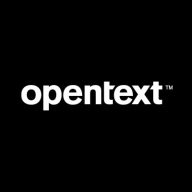

OpenText SiteScope and Datadog are competing in the IT monitoring space. Datadog holds the advantage in features due to its comprehensive capabilities and cloud-native design.
Features: OpenText SiteScope is appreciated for its agentless architecture, covering servers, network devices, and applications without additional resource demand. It supports multiple protocols, enabling extensive monitoring capabilities. Datadog is favored for its cloud-native design, integration with a range of services, and advanced real-time analytics, providing excellent scalability for cloud environments.
Room for Improvement: OpenText SiteScope could enhance capabilities for cloud integrations and offer more intuitive dashboards. Additional resources for API functionality would improve its flexibility. Datadog could focus on refining cost-effectiveness, optimizing its complex data ingestion process, and enhancing offline analysis features.
Ease of Deployment and Customer Service: OpenText SiteScope relies on a traditional deployment model with strong on-premises reliability and dependable customer support. Datadog provides a modern, cloud-based setup acclaimed for its intuitive interface and comprehensive online resources, suitable for dynamic environments.
Pricing and ROI: OpenText SiteScope offers lower initial costs, suited to budget-sensitive environments with straightforward ROI. Datadog's higher cost reflects its extensive features, often leading to justified ROI through improved capabilities and cloud flexibility. The potential for long-term gains in complex deployments gives Datadog an edge.
| Product | Market Share (%) |
|---|---|
| Datadog | 6.6% |
| OpenText SiteScope | 0.6% |
| Other | 92.8% |


| Company Size | Count |
|---|---|
| Small Business | 80 |
| Midsize Enterprise | 46 |
| Large Enterprise | 95 |
| Company Size | Count |
|---|---|
| Small Business | 8 |
| Midsize Enterprise | 4 |
| Large Enterprise | 20 |
Datadog integrates extensive monitoring solutions with features like customizable dashboards and real-time alerting, supporting efficient system management. Its seamless integration capabilities with tools like AWS and Slack make it a critical part of cloud infrastructure monitoring.
Datadog offers centralized logging and monitoring, making troubleshooting fast and efficient. It facilitates performance tracking in cloud environments such as AWS and Azure, utilizing tools like EC2 and APM for service management. Custom metrics and alerts improve the ability to respond to issues swiftly, while real-time tools enhance system responsiveness. However, users express the need for improved query performance, a more intuitive UI, and increased integration capabilities. Concerns about the pricing model's complexity have led to calls for greater transparency and control, and additional advanced customization options are sought. Datadog's implementation requires attention to these aspects, with enhanced documentation and onboarding recommended to reduce the learning curve.
What are Datadog's Key Features?In industries like finance and technology, Datadog is implemented for its monitoring capabilities across cloud architectures. Its ability to aggregate logs and provide a unified view enhances reliability in environments demanding high performance. By leveraging real-time insights and integration with platforms like AWS and Azure, organizations in these sectors efficiently manage their cloud infrastructures, ensuring optimal performance and proactive issue resolution.
OpenText SiteScope is an agentless monitoring program that tracks the availability and performance of distributed IT infrastructures such as servers, network devices and services, applications and application components, virtualization software, operating systems, and other IT enterprise components.
OpenText SiteScope is an autonomous hybrid IT monitoring system that can monitor more than 100 different types of IT components in real time, thanks to a lightweight and highly customizable remote access architecture.
With OpenText SiteScope, IT teams can get the data they need to keep on top of problems and eliminate bottlenecks before they become major concerns.
OpenText SiteScope can reduce total cost of ownership (TCO) by utilizing agentless technology, which eliminates the need to install and monitor agents on each box. Manual activities can be automated, and teams can save time and effort by using pre-packaged solution templates.
OpenText SiteScope Features
OpenText SiteScope has many valuable key features. Some of the most useful ones include:
We monitor all Application Performance Monitoring (APM) and Observability reviews to prevent fraudulent reviews and keep review quality high. We do not post reviews by company employees or direct competitors. We validate each review for authenticity via cross-reference with LinkedIn, and personal follow-up with the reviewer when necessary.